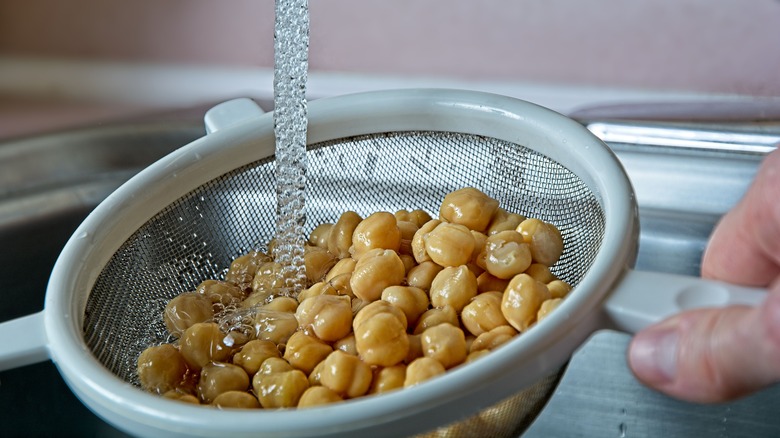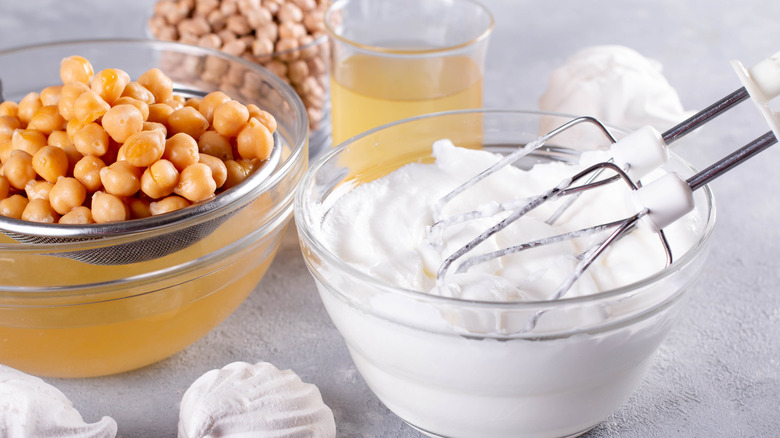The Scientific Reason Canned Beans Get So Foamy When Washed
If you've ever been in the midst of opening can after can of cooked beans to incorporate into a big pot of comforting homemade vegetarian chili, chances are you've seen a persistent foamy liquid develop when attempting to rinse and drain legumes. You may have wondered: what is this foam, is it safe to eat, and how do I get rid of it at all costs?
The good news is, this foamy liquid is totally normal and safe. It occurs due to a scientific interaction between the starchy, protein-containing bean liquid and water. The foamy formation is caused by a mixture of starch, proteins, and plant-compounds called saponins. These components can all be found in the bean water in the can and are a byproduct of the bean-cooking process.
You may be familiar with the binding properties of proteins in which eggs provide structure to cookies and that of starch and water (hello, saving pasta water to help sauce adhere to its noodles). But what about saponins? Saponins are part of a waxy, protective coating found inside the cell walls of plants including legumes, quinoa, and garlic. When you rinse a can of beans under water, the saponins react with the liquid to form a foam and impart the sudsy, soapy look.
Rinse beans based on personal preference, or the recipe
While it's tempting to wash the foamy liquid off beans, it's just a natural chemical occurrence. Many recipes call for rinsed and drained beans, but depending on your cooking project (and personal preference), it's possible you could save some time and forgo the bean-washing step altogether.
Still, if you're serving beans in a fresh salad or a black bean salsa recipe, in which the beans are plated directly from the can, avoid adding the bubbly liquid to your dish and give them a good rinse. It may also help to rinse beans to reduce sodium, as some canned beans contain added salt.
However, if you're using beans for a soup, stew, or blended dip (such as black bean hummus), you can simply drain beans and add them to your pot or slow cooker, without the need to rinse them to remove the foamy liquid. Because the starches, proteins, and saponins are all known to have binding properties, retaining some of the liquid could lead to a desirable thickened soup or extra-creamy hummus.
The case for saving bean water
Before you drain and rinse legumes (especially a can of chickpeas), you might want to think twice about throwing the water down the drain. In recent years, aquafaba, or "bean water," has emerged and gained popularity as a replacement for eggs, especially for vegan or plant-based diets.
Aquafaba whips up beautifully (and quite unexpectedly) into a creamy white meringue-like consistency, and it can be used as a plant-based substitute to make angel food cake or Swiss meringue buttercream. The bean water is also commonly used as a foamy binder and replacement for eggs in cookie recipes. For an inventive take on a classic cocktail, aquafaba can also be used to make a plant-based "egg white" foam.
To make aquafaba, simply save the water from a can of chickpeas by draining the can over a bowl using a fine mesh sieve. While you can save the bean water from other cans of legumes, chickpea water is most popular for its whipping properties and relatively neutral color, smell, and taste.


